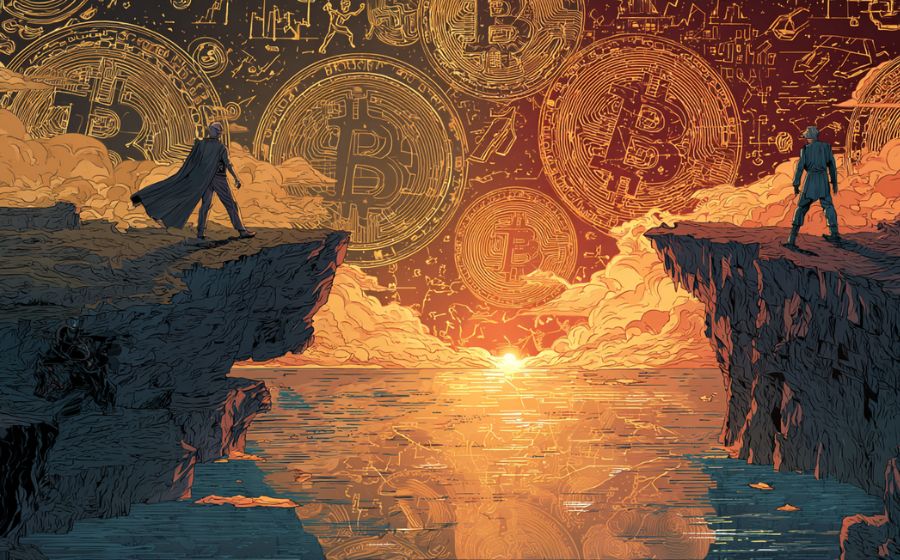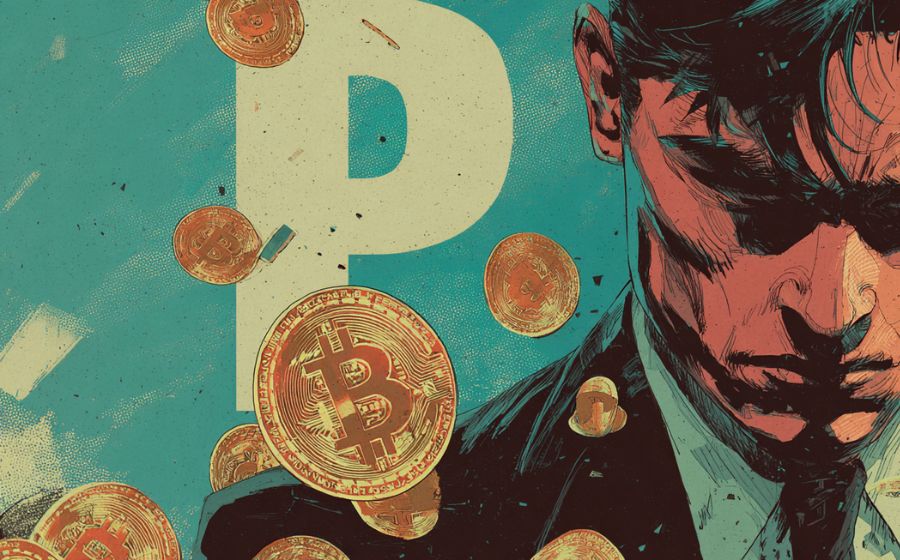
KEYTAKEAWAYS
-
Bitcoin and gold are showing the strongest correlation in history, with a 30-day coefficient above 0.85 as both assets rise amid global inflation and geopolitical uncertainty.
-
Over fifteen years, their relationship evolved from independence to selective resonance—diverging in calm markets but moving together during crises and liquidity shocks.
-
The “digital gold” narrative is maturing, as institutional investors treat bitcoin as a parallel hedge asset rather than a speculative token, reshaping how global markets define safety and trust.

CONTENT

THE BEGINNING OF A TRUSTLESS AGE
In 2009, a new financial story quietly began in the shadows of the internet. When Satoshi Nakamoto wrote, “We need an electronic payment system based on cryptographic proof instead of trust,” it was more than a technical statement. It was a rebellion against the world after the 2008 crisis—against central banks, against inflation, against the fragile promise of paper money.
At that time, gold stood on the opposite side. It had been trusted for thousands of years, the last refuge in a storm and the foundation of global reserves. Investors believed only the weight of metal could anchor faith. Bitcoin, the newborn “invisible gold,” was still an experiment on online forums. In 2011, one bitcoin equaled one dollar—barely worth a fraction of a gram of gold. The gap between the two was not only in price but in belief: one symbolized order, the other defiance.
For the first few years, there was almost no correlation between their prices. Gold moved with macro policy and geopolitics, while bitcoin was driven by code updates, black-market use, and community hype. During the 2013 Cyprus banking crisis, gold rose modestly, but bitcoin surged 178%, becoming a hidden channel for escaping capital controls. For the first time, the market realized this digital asset might play a similar role to gold—it reacted to fear, to distrust, to the instinct for freedom.
CONFLICT AND DIVERGENCE
After 2016, bitcoin began entering the mainstream. Institutions studied it, regulators noticed it, and retail traders rushed in. Yet correlation with gold remained weak. According to The DeFi Report, in 2017 the coefficient of determination (R²) between bitcoin and gold was only 0.033, meaning almost no relationship. Gold stayed within its world of stability, while bitcoin became the playground of speculation.
Then came 2018’s crash. Bitcoin plunged from $20,000 to $3,000, while gold rose 2%. They danced in separate universes: one rewriting the idea of finance, the other guarding the memory of value.
The division broke only in 2020. When the pandemic hit, both markets collapsed together—stocks, crypto, and commodities all fell. Within weeks, bitcoin dropped from $10,000 to $4,000, and gold also fell. But after central banks unleashed unprecedented liquidity, both assets recovered in sync. For a short time, the correlation rose above 0.5, one of the few “resonance moments” in their shared history. The idea of “digital gold” entered public debate. As money printing accelerated, both metals and code were seen as protection against dilution.
That harmony did not last. By 2021, bitcoin soared on Tesla news, NFTs, and institutional hype, reaching $69,000 while gold stayed still. The correlation fell back to near zero. The two assets, once again, drifted apart—faith and fear moving in opposite directions.
MACRO STORMS AND THE DIGITAL SAFE HAVEN EXPERIMENT
In 2022, the U.S. Federal Reserve began the sharpest rate-hike cycle in forty years. The dollar strengthened, liquidity vanished, and risk assets collapsed. Gold held firm, but bitcoin faced a brutal unwinding. The Terra crash, Three Arrows bankruptcy, and FTX collapse triggered a crisis of trust across crypto.
Investors fled back to gold. That year, gold stayed above $1,700 while bitcoin fell below $16,000. Their correlation turned negative, reaching nearly -0.8—the lowest in history. Bitcoin seemed excluded once again from the “safe-haven” club, until the macro tide shifted.
By late 2023, inflation remained stubborn, geopolitical risk rose, and gold broke past $2,200. Bitcoin also rallied above $70,000, driven by ETF approvals and halving expectations. CryptoQuant data showed their 30-day correlation reaching 0.85—a rare high after fifteen years. Institutional logic was shifting. BlackRock, Fidelity, and ARK began adding bitcoin to allocation reports. After U.S. ETF approval, capital started flowing from gold ETFs into spot bitcoin products. A subtle substitution was emerging: bitcoin was no longer only a risk asset but a new form of digital refuge.
Behind this trend lies a deeper rebalancing of global trust. As national debt soars and monetary expansion becomes routine, investors seek assets with limited supply. Gold and bitcoin, though different in form, now share the same philosophy: resistance to inflation, independence from intermediaries, and value beyond borders.
THE PRESENT AND THE FUTURE
By autumn 2025, gold had reached a record $4,179 per ounce, while bitcoin held around $110,000. Their price curves once again mirrored each other—rising and falling together in uncertainty, diverging in moments of extreme optimism. This delicate rhythm is what makes the “digital gold” narrative so compelling.
Correlation, however, does not mean replacement. Gold’s worth comes from centuries of belief and institutional backing. Bitcoin’s value arises from code, computation, and consensus. Gold is the asset of states; bitcoin is the weapon of individuals. One stands for order, the other for freedom. When markets are calm, they diverge. When the world shakes, they move together. Their selective harmony reflects the same human instinct—to find security when trust erodes.
CryptoQuant CEO Ki Young Ju recently wrote, “As gold hits new highs, bitcoin-gold correlation climbs to 0.85. The digital-gold narrative remains alive.” That comment means more than statistics. Fifteen years after its birth, bitcoin has outgrown its speculative childhood and now stands beside gold in the grand story of macro assets. It is still volatile, still young, yet no longer alone. And as the next global liquidity shift approaches, one question returns to the center of finance: In an age of endless inflation, will gold continue to guard trust, or will bitcoin redefine it?












